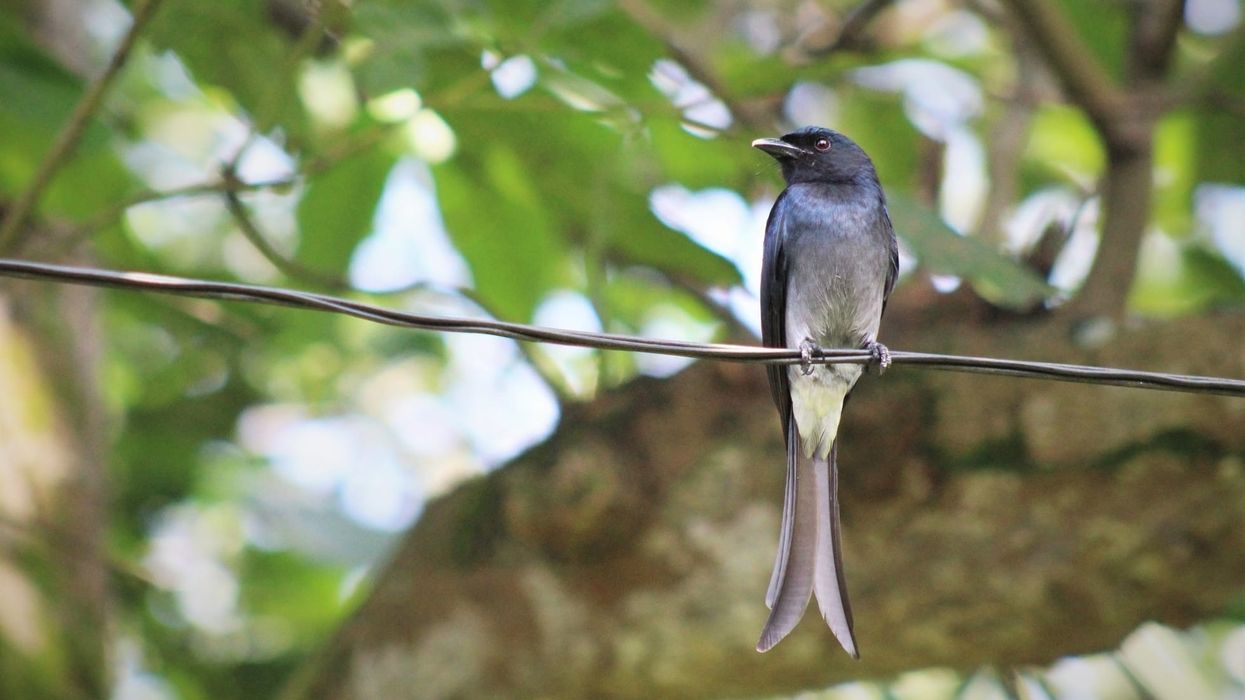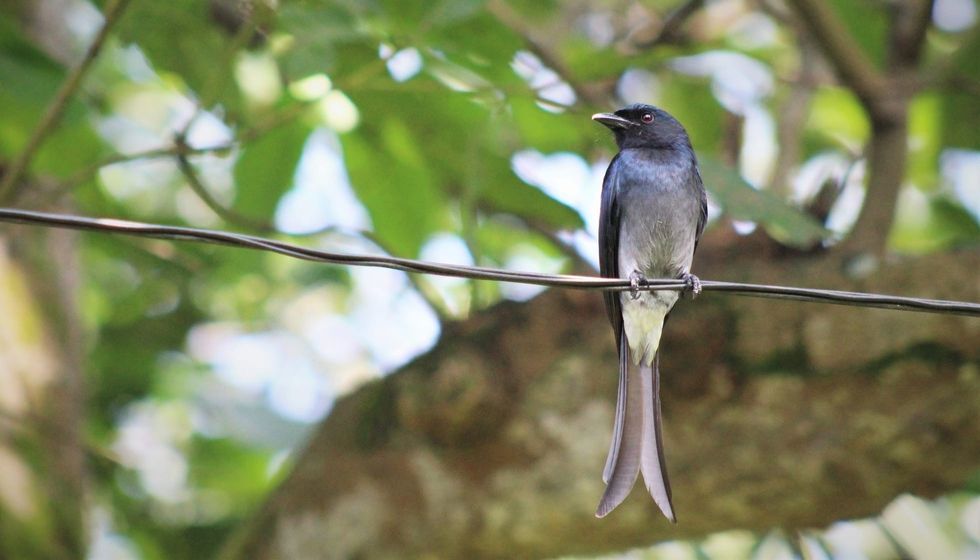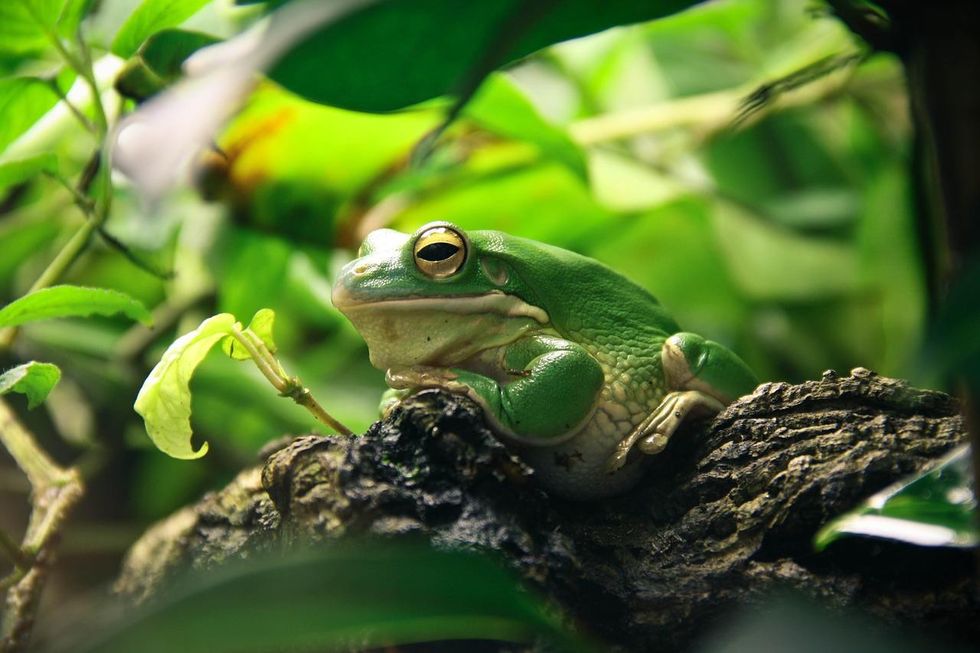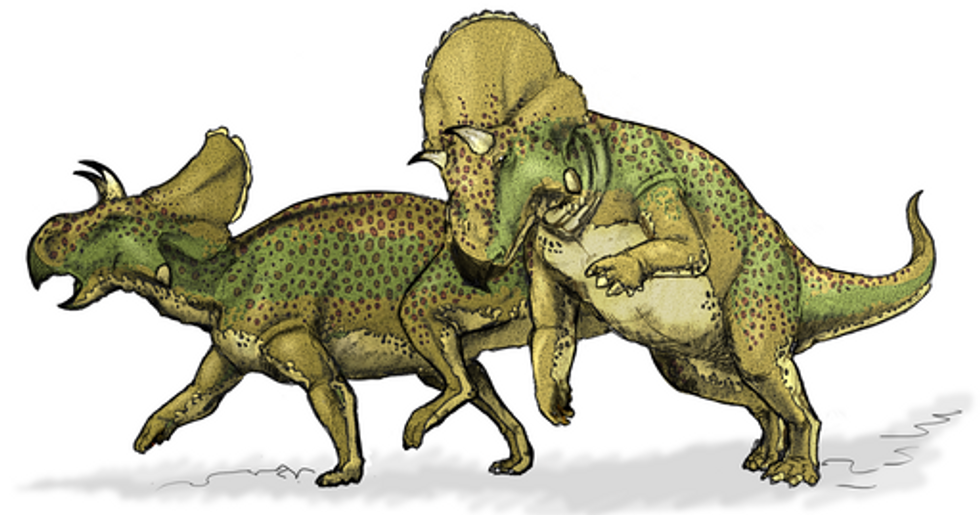Drongo is a songbird with shiny and glistening plumage and a black forked tail. They are found in Southern Asia, Africa, and Australia. Drongos are mostly found in shades of black and dark gray and have short legs. The Dicrurus genus contains thirty species.
The black drongo (Dicrurus macrocercus) belongs to the family Dicruridae and is also referred to as the king crow. It is a small Asian passerine bird of the Drongo family, Dicruridae. Previously, it was seen as a taxonomic category (Dicrurus adsimilis macrocercus) of African drongo (Dicrurus adsimilis), however now it is recognized as a full species on its own.
These birds are insectivores that love forests and bushes. They find their prey on their ground, or they catch flies. They are known for their amazing ability to mimic other birds and animals, which makes the other species respond to the calls of this bird, drongo.
Let's have a look at these interesting facts, and if you like these, do read our crested pigeon facts and saffron finch facts.
Drongo Interesting Facts
What type of animal is Drongo?
Drongos are a family of tiny passerine birds of the Old World tropics. They're aggressive and fearless birds with loud voices.
What class of animal do Drongos belong to?
Drongos (genus Dicrurus) belong to the class Aves, family Dicruridae, and the phylum Chordata.
How many Drongos are there in the world?
There are about 30 species of drongos. Their exact population is unknown.
Where do Drongos live?
Drongo is found in open forests or bush throughout the Australian subcontinent, New Guinea, south of Africa, and Indonesia. They can also be found in parts of India.
What is a Drongo's habitat?
They are mostly found in open forests and usually perch and hunt on the ground. These birds with long forked tails are mostly found in savanna, fields, and urban habitats.
Who do Drongos live with?
These fork-tailed drongos live in groups. They are not found in solitude.
How long do Drongos live?
Their lifespan is 15 years in the wild.
How do they reproduce?
Black Drongos breed in February and March in southern India and till August in other parts of the country. Males and females display aerobatic chases and lock their wings and beaks together.
These bonds are maintained for the entire breeding season. The nest may be a vessel created with a layer of sticks placed within the fork of a branch and is made in one week by the male and feminine.
The eggs are laid closer to the rains in April. The usual clutch has three to four eggs, laid in the nest placed on the outer fork of a tree's branch.
Leafy trees like jackfruit trees are preferred. The eggs are pale with cream spots, incubated by the parents for 14-15 days.
What is their conservation status?
These birds are listed as of Least Concern. Their population does not have any major threats.
Drongo Fun Facts
What do Drongos look like?
Drongo has a glossy black plumage and a fork-like tail. Adults sometimes have a small white spot at the bottom and a crest on their heads. Their tail is typically long and forked with out-turned corners. Some species have more detailed tail patterns and cute bills.
Their short legs help the bird sit upright while perched. The iris is dipped in dark brown (not crimson as within the similar ash-gray drongo). The sexes can't be told apart within the field as they do not display sexual dimorphism.
Juveniles are dark-brown and have some white speckles near their belly and may be mistaken for the white-bellied drongo. First-year birds have white tips near the feathers of the belly, whereas second-years have these white-tipped feathers restricted to the vent.
How cute are they?
These birds are adorable. Their tails are the most distinct.
How do they communicate?
The black fork-tailed Drongo bird uses vocal communication to join forces and deceive various hunting partners.
How big are Drongos?
The black fork-tailed Drongo is 7-25 in (18-63.5 cm) in length. They are medium-sized birds.
How fast can Drongos fly?
They have strong flap wings and are capable of fast maneuvers. Their speed is so fast that it is difficult for a professional photographer to capture them. Their exact speed is not known.
How much do Drongos weigh?
These black greater racket-tailed Drongos weigh from 1.4-4.2 oz (40-120 g).
What are the male and female names of the species?
These glossy black fork-tailed Drongos, also known as Dicruridae, do not have sex-specific names for the species.
What would you call a baby Drongo?
There are no specific names for a baby Drongo. They are called Drongo chicks.
What do they eat?
The black fork-tailed Drongo birds feed on insects that they catch in flight or on the ground.
Are they dangerous?
Drongo bird is small in size, but they are aggressive and fearless and can attack when threatened. The species (D. macrocercus) has very aggressive behavior toward larger birds, like a crow.
They will fight any bird of prey that invades their territory when their nest or young are threatened. Smaller birds typically nest within the well-guarded section of a nesting glossy black drongo.
Would they make a good pet?
Fork-tailed Drongo will not make a good pet, especially because of its aggressive and fearless behavior. They are bullies and attackers in general.
Did you know...
Black Drongos (D. macrocercus) is also known as the king crow because they can even intimidate a true crow.
Drongos (D. adsimilis) even use a spread of mimicked calls (vocal mimicry) to flexibly vary their deceptive alarms, thereby maintaining their deception racket.
These old-world birds' nests may be a flimsy basket, sometimes too tiny for brooding birds.
The way these blackbirds feed is very similar to flycatchers or shrikes, taking large insects (like crickets) and termites.
The black Drongo (D. macrocercus) is crested and has head plumage. The tail is typically long and forked, with out-turned corners.
This fork-tailed Drongo bird steals food from different animals, which negatively affects the animal that has had its food stolen. They are famous for chasing off other birds, usually pecking and bombing their victims till they take flight, abandoning their food, that drongo then steals. Cunning, right?
A spangled Drongo makes a sound that often sounds like a baby's sneeze.
Different Types Of Drongo
The square-tailed Drongo (Dicrurus ludwigii) is found in Africa towards the south of the desert. The Dhining Drongo (Dicrurus atripennis) is found in Cameroon, the Central African Republic, the Republic of the Congo, the Republic of Cote d'Ivoire, Ghana, Guinea, Liberia, and Nigeria.
The fork-tailed Drongo (Dicrurus adsimilis) - Common and found in Africa towards the south of the desert.
Aldabra Drongo (Dicrurus aldabranus)is found on the island of Aldabra (part of Seychelles). The lack drongo (Dicrurus macrocercus) is found in tropical southern Asia, from southwest Iran through India, southern China, and Indonesia.
Similarly, the white-bellied drongo (Dicrurus caerulescens) is found in India, Nepal, and Sri Lanka. The crow-bill Drongo (Dicrurus annectent) is found in Bhutan, Brunei, Cambodia, China, India, Indonesia, Laos, Malaysia, Myanmar, Nepal, the Philippines, Singapore, Siam, and Vietnam. The bronzed drongo (Dicrurus aeneus) is found within the forests of the Indian landmass and southeast Asia.
The hair-crested Drongo (Dicrurus hottentottus) is found in India, Bhutan, China, Indonesia, and Brunei. The balicassiao (Dicrurus balicassius) is found in Philippines.
The ribbon-tailed Drongo or paradise drongo (Dicrurus megarhynchus) - Found on the island, of New Guinea, and the spangled drongo (Dicrurus bracteatus) is found in the Australian subcontinent. The greater racket-tailed Drongo (Dicrurus paradiseus) is found in Mishmi Hills, the islands of Borneo and Java, and Australia.
Drongo's Sounds
While fork-tailed Drongo is usually silent, it generally makes surprisingly loud, complicated, and diverting calls that sound like a 'sneeze.' Some species are great mimics and have a range of alarm calls, to which different birds and animals usually respond. They're acknowledged to utter hoax alarm calls that scare other animals off food, which the drongo then claims.
Here at Kidadl, we have carefully created lots of interesting family-friendly animal facts for everyone to discover! Learn more about some other birds, including our Nicobar pigeon facts and American white ibis facts.
You can even occupy yourself at home by coloring in one of our free printable Drongo coloring pages.









